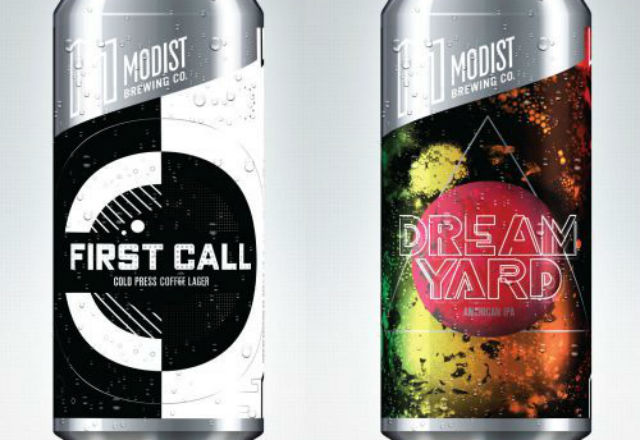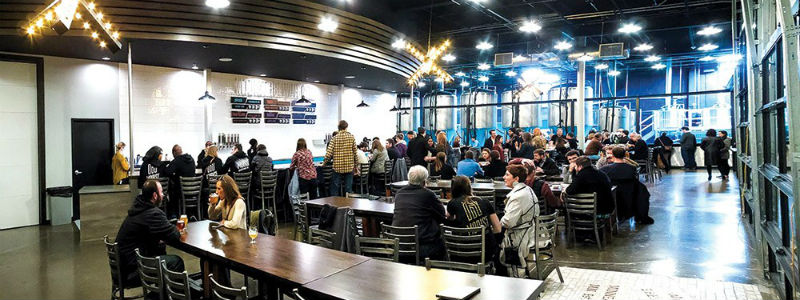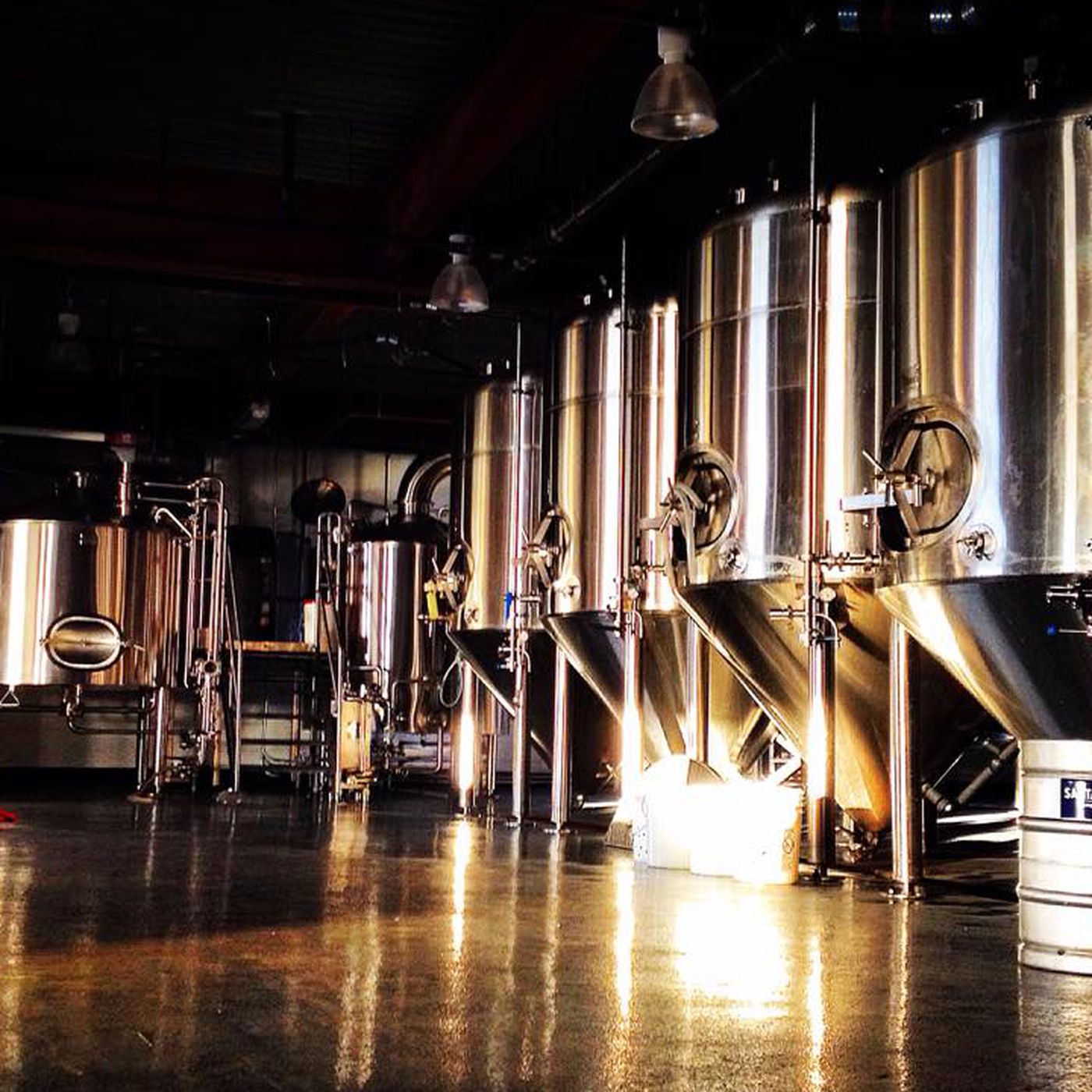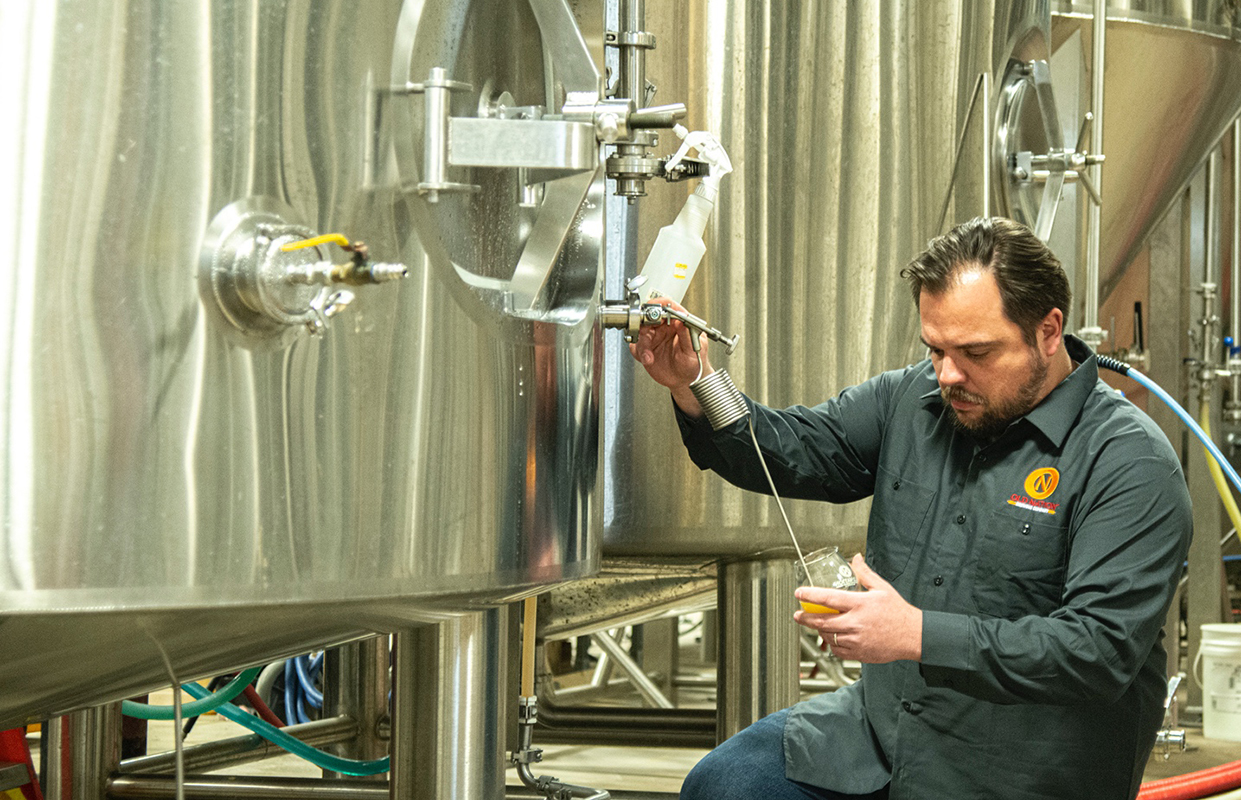
Breaking into the market as a new brewery can be a challenge. Especially if it means fighting for space on an already crowded market shelf.
Having the right art is very important said Modist Brewing‘s Eric Paredes, the chief manager for the Minneapolis brewery that opened in 2016.
“The shelves are more and more crowded and it’s a challenge to stand out amidst a sea of options. It can also be a difficult to find an approach that is authentic to your brand,” he said, noting that a huge prerequisite for newer breweries is having a very clear picture of what your brand is and isn’t.
Modist recently launched its 16-ounce cans, so the process of decision was very fresh in the staff’s mind. Paredes said they wanted the cans to not only stand out on shelf, but to be as unique as the beers they put in them. To accomplish this, they decided to surrender as much space on the cans as possible to local artists.
“We gave our logo small but obvious location, and allowed the art to fill the rest of the can,” Paredes said. “We also decided to use to different artists/styles for each beer. We see each type of beer as an individual piece of art/our own personal masterpiece, and wanted the beer art to mimic that.
Paredes agreed that most branding experts would have probably told the brewery team to put the logo as large and centered as possible.
“But we found that the look that felt “right” for Modist had art as the centerpiece,” he said “And we felt that we could have art featured and still have folks look at a can of Modist beer and say ‘Yep, this a Modist beer.’ ”
For our first set of can designs, Modist worked with a collective of street artists/designers called “Burlesque of North America,” which Paredes said was a good fit.
“Modist is an alternative/deviant idea and an alternative/deviant brand,” he said. “This makes it easy to look toward the alternative/deviant subcultures for inspiration (street art, skateboard and motorcycle brands).”
It was a very iterative process. The owners created “Is” and “Is Not” mood boards and Pinterest collections of images that captured their thoughts on what each beer evoked. Along with that, they created a comprehensive creative brief that laid out mandatories as well as areas for creative interpretation by the artists.
“The artists then submitted several rounds of designs, each time honing in on specifics based on our feedback,” Paredes said. “It’s not easy to capture the thoughts and artist interpretations of those, but a collaborative process with open dialogue paved the way. We’re very pleased with the resulting designs.”







1 Trackback / Pingback